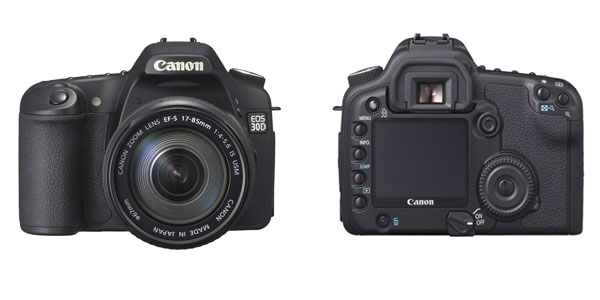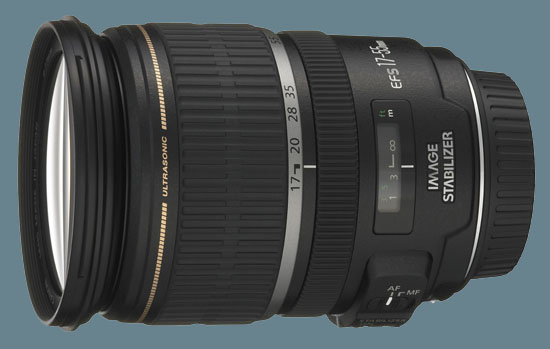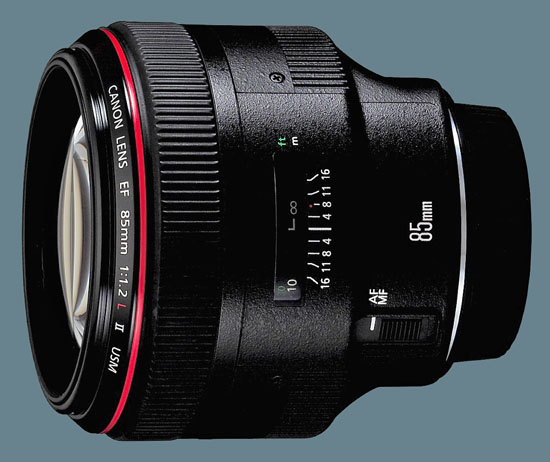
 |
| Home • Reviews • Forums • News 2015 • 2013 • 2012 • 2009 • 2008 • 2007 • 2006 • 2005 • 2004 RSS Feeds • FOV Factor Table • Sensor Sizes | Definitions: A-D • E-H • I-L • M-P • Q-U • V-Z | Sitemap Articles • Archived Websites (Pre-DigitalDingus): D100 Lounge • E-10 Club | Contact |
Canon Announces 8.2 Megapixel 30D & Two New Lenses |
| February 21, 2006 |
| Overview
|
LAKE SUCCESS, N.Y. ( Feb. 21, 2006) - Addressing the needs of a wide range of photographers ranging from wedding and portrait specialists to photojournalists and advanced amateurs, Canon's new EOS 30D Digital SLR redefines the mid-range of the growing DSLR market and achieves new standards of excellence for features, durability, versatility and even affordability. Canon also expands its digital SLR lens offerings with new EF-S 17-55mm f/2.8 IS USM and EF 85mm f/1.2L II USM lenses. Whether tracking the trajectory of a bridal bouquet from its ceremonial over-the-shoulder launch to its unceremonious diving reception (at five frames-per-second (fps) of course), freezing the action on a hot news story or capturing the essence in the eyes of a portrait subject, Canon's 8.2 megapixel EOS 30D digital SLR delivers. In stores beginning in mid-March - ideal timing for photographers gearing up for the imminent onslaught of spring weddings - the Canon EOS 30D Digital SLR carries a suggested, body-only selling price of $1,399(1), ($100 less than the EOS 20D digital camera at its announcement). The EOS 30D Digital SLR will also be available in kit form with an EF-S 18-55mm f/3.5-5.6 II zoom lens for an estimated selling price of $1,499(1). "We recognize the enormous potential of the advanced amateur digital SLR market," stated Yukiaki Hashimoto, senior vice president and general manager of the consumer imaging group at Canon U.S.A., Inc. "To better support this audience, we will continue to offer the EOS 20D digital SLR at a slightly more affordable price point of $1,299." The EOS 30D model builds upon the virtues that made the EOS 20D Digital SLR the number one camera in its class virtually from day-one, including Canon's proprietary 8.2-megapixel APS-C size CMOS sensor, powerful DIGIC II Imaging processor, fast five fps shooting capability and field-tested tough construction. This new EOS 30D Digital SLR takes professional photographers even closer to the upper reaches of Canon's pro digital SLR line, incorporating input from users and features and innovations from the EOS 5D and even the EOS-1D Mark II N Digital SLRs, at a fraction of their respective prices. Top lining the improvements that set the EOS 30D Digital SLR apart from its worthy predecessor are:
Recognizing the need for efficient and effective work flow controls - particularly for professional photographers - the EOS 30D Digital Camera has improved folder management, providing manual folder creation and raising the number of images in each folder to 9,999 (from 100 as it was on the EOS 20D model). The unit offers enhanced camera-controlled direct print features and incorporates both direct print and direct download capabilities with the single press of the camera's print/share button. "Canon focused the EOS 30D Digital SLR on professional photographers who need to keep a close watch on their equipment budget and advanced amateurs who want to step up in class and capabilities," added Mr. Hashimoto. "As an accessible primary pro SLR or the affordable second body in the camera bag, the EOS 30D digital SLR provides photo professionals with the advanced features, fast, responsive controls, and exceptional image quality they demand, in a compact, lightweight yet ruggedly constructed stainless steal and magnesium alloy package." Capture The EOS 30D SLR continues its predecessor's fastest-in-class shooting rate of five fps but, thanks to improvements in signal processing algorithms, the camera's burst rate has increased from 23 to 30 consecutive frames in JPEG L/F mode and from 6 to 11 consecutive frames in RAW mode. As an added enhancement, in those situations where a slower rate of continuous shooting will suffice, the EOS 30D SLR offers a three fps option that extends the burst capability to 37 shots in JPEG L/F mode. Canon enhanced several basic functions for easy, efficient use that make the new EOS 30D SLR even more responsive than previous models, including:
Autofocus and Exposure Control The EOS 30D camera retains Canon's unique 9-point Wide-Area AF system, originally introduced with the EOS 20D model. This innovative focusing system features a diamond-shaped layout with a dual-precision central AF point that provides full cross-type performance with maximum apertures as small as f/5.6, yet achieves up to three times the standard focusing precision when used with EF lenses featuring maximum apertures larger than or equal to f/2.8. A convenient Multi-controller provides fast and easy AF point selection. While the EOS 30D SLR uses the same 35-zone metering sensor as its predecessor, Canon has added a spot metering capability that covers approximately 3.5 percent of the viewfinder area at the center. As a result, there are now four metering modes offered on the EOS 30D SLR: Evaluative (set automatically in the Basic Zone modes), partial (approximately 9 percent), centerweighted average and spot. AF-point linked Evaluative metering, E-TTL II autoflash and 12 exposure control modes (11 AE modes plus manual) are unchanged from the EOS 20D SLR. Picture Style First introduced on the Canon EOS-1D Mark II N and EOS 5D cameras, Picture Style is Canon's improved approach to selecting the presets for sharpening, contrast, saturation and color tone that most closely reflect the needs and intent of the user. Similar to selecting the film type in order to achieve a desired result, the Picture Style feature offers six setting choices - Standard, Portrait, Landscape, Neutral, Faithful and Monochrome - with an additional three user defined settings available. Large 2.5-inch LCD Screen Among the enhancements most immediately noticeable on the EOS 30D SLR (compared to its predecessor) is the camera's new 2.5-inch LCD screen with 230,000-pixel resolution, wide 170-degree viewing angle, and LED-backlight design for substantially improved visibility. While it is identical to the one found on the EOS-1D Mark II N and the EOS 5D models, the significance of the EOS 30D SLR's 2.5-inch LCD monitor looms larger than simply its viewing area (and correspondingly larger and easier to read menu text). Like the EOS 5D model, the EOS 30D SLR's full-featured INFO screen includes files sizes, a choice of brightness and RGB histograms and AF frame displays. In addition, Quick Review images are now enlargeable making it quicker and easier to check the focus of a shot immediately after taking the shot. Navigating through the images is also easier on the eyes thanks to the EOS 30D SLR's improved auto rotate feature. This feature gives the user the choice of automatically rotating vertical images to correct the orientation for viewing on the camera's LCD monitor as well as on a PC, rotating only for the PC or not rotating the image at all. Work Flow The camera also features improved file handling, which allows for 9,999 images to be stored in a single folder (compared with a new folder for every 100 images on the EOS 20D model) and an improved "jump feature" that permits image searches by ten images in one step, 100 images in one step or searching by date. Finally, in a stroke of user-friendliness, error codes that typically send users scurrying to the manual for a translation now appear on the monitor screen with an explanation and recommended solutions for correcting the error. Direct Print/Direct Download Functionality An ease of use feature that actually migrates up to the EOS 30D SLR from Canon's PowerShot line of digital cameras, EOS 30D SLR users can now access direct print and direct download functions simply by pressing the print/share button on the back of the camera. Further, when users connect the EOS 30D SLR to a PictBridge or other compatible printer, the user can select paper sizes, cropping, and even some special effects. One-touch direct downloading is also available when the EOS 30D camera is connected to personal computers running Microsoft Windows XP or Mac OS X 10.2-10.4. In addition to its standard PictBridge features, which are compatible with most PictBridge-compliant printers regardless of manufacturer, the 30D model supports additional direct printing features exclusively when the camera is connected to one of the new PIXMA Pro9500 or PIXMA Pro9000 desktop photo printers. These features include:
DIGIC II Image Processing Technology At the heart of the EOS 30D SLR - as it is throughout Canon's EOS line of digital cameras - is the proprietary and renowned DIGIC II imaging processor. This power-efficient processor enhances picture definition, vibrancy and quality, while helping increase the speed of the camera's startup, autofocus, shutter response, playback and image processing speed. New Lenses While the EOS 30D SLR is compatible with all Canon EF and EF-S lenses, two impressive new additions to the Canon imaging arsenal - a large aperture standard zoom lens and ultra-fast medium telephoto lens - will be arriving in stores at the same time as the EOS 30D SLR.


Canon will debut the EOS 30D Digital SLR along with the EF-S 17-55mm f/2.8 IS USM and the EF 85mm f/1.2L II USM lenses in its booth (#3509) during the Photo Marketing Association (PMA) exhibit in Orlando, Fla., from February 26th - March 1st, 2006. About Canon U.S.A., Inc. Canon U.S.A., Inc. delivers consumer, business-to-business, and industrial imaging solutions. The Company is listed as one of Fortune's Most Admired Companies in America and is rated #35 on the BusinessWeek list of "Top 100 Brands." Its parent company Canon Inc. (NYSE:CAJ) is a top patent holder of technology, ranking second overall in the U.S. in 2005, with global revenues of $31.8 billion. For more information, visit http://www.usa.canon.com.
All referenced product names, and other marks, are trademarks of their respective owners.
Specifications subject to change without notice.
(1) Pricing is subject to change at any time. Actual prices are determined by individual dealers and may vary |
| Home • Reviews • Forums • News 2015 • 2013 • 2012 • 2009 • 2008 • 2007 • 2006 • 2005 • 2004 RSS Feeds • FOV Factor Table • Sensor Sizes | Definitions: A-D • E-H • I-L • M-P • Q-U • V-Z | Sitemap Articles • Archived Websites (Pre-DigitalDingus): D100 Lounge • E-10 Club | Contact |